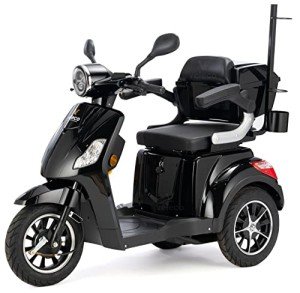Mobility Scooters: A Comprehensive Guide
Mobility scooters have become an important mode of transport for lots of individuals dealing with mobility obstacles. This article checks out the different facets of mobility scooters, including their types, advantages, functions, and a guide for potential purchasers.
Comprehending Mobility Scooters
Mobility scooters are electrically powered gadgets developed for people with restricted mobility. They supply a means of transport for people who may have trouble walking but still want to retain their self-reliance. They are available in different designs and functions to cater to a large range of requirements.
Kinds Of Mobility Scooters
Mobility scooters can usually be categorized into 3 main types:
| Type | Description | Best For |
|---|---|---|
| Compact Scooters | These are small and lightweight, perfect for indoors and short journeys. | Users with limited storage space or those who travel typically. |
| Mid-size Scooters | A balance between mobility and stability, suitable for both indoor and outside use. | Those who need to cover a variety of terrains. |
| Heavy-duty Scooters | Big and robust, created for rugged outdoor use and much heavier individuals. | Users needing extra weight capacity or going off-road. |
Secret Features of Mobility Scooters
The option of mobility scooter frequently depends on the functions that line up with private needs. Here are a few of the crucial functions to consider:
- Weight Capacity: Mobility scooters come with different weight limitations. It is important to pick a scooter that can properly support the user's weight.
- Variety: The range a scooter can take a trip on a single charge varies. Depending on user requirements, one might choose for scooters with a variety of up to 40 miles.
- Speed: Most mobility scooters can reach speeds between 4 to 8 miles per hour. Consider what speed is comfy and safe for the designated environment.
- Turning Radius: A compact turning radius is important for indoor usage, permitting easier navigation in tight areas.
- Battery Type: The kind of batteries utilized can affect the scooter's performance. Lead-acid and lithium-ion batteries are the most typical.
Advantages of Using Mobility Scooters
The advantages of mobility scooters extend beyond just transportation. Some essential advantages consist of:
- Independence: Users can navigate their environment without depending on caregivers, promoting self-reliance and confidence.
- Health Benefits: Using a scooter can encourage outdoor activity, causing physical and psychological health improvements by decreasing feelings of seclusion.
- Convenience: Scooters can easily be operated in numerous environments, whether inside, in shopping malls, or outdoors.
Important Considerations When Buying a Mobility Scooter
When acquiring a mobility scooter, a number of considerations can help ensure that you choose the right design:
Assess Individual Needs:
- Mobility level: Consider just how much assistance the person will need.
- Range of use: Determine where the scooter will mostly be used (inside, outdoors, on rough terrains, etc).
Test Drive:
- Always test drive numerous models to find an appropriate fit. electric mobility scooter on convenience, ease of steering, and the scooter's responsiveness.
Evaluation Safety Features:
- Look for scooters with adequate security functions like lights, indicators, and anti-tip styles.
Examine Warranty and Service Options:
- A dependable service warranty and offered service alternatives are crucial for long-lasting usage.
Frequently Asked Questions about Mobility Scooters
1. How quickly do mobility scooters go?Mobility scooters normally have speeds varying from 4 to 8 mph, with most developed for safety instead of high-speed travel. 2. Are there weight constraints on mobility scooters?Yes, mobility
scooters feature particular weight limits, typically varying from
250 pounds to over 500 lbs, depending on the model. 3. Can mobility scooters be used indoors?Certain designs, particularly compact scooters, are particularly developed for
indoor use and are easier to maneuver in tight areas. 4. How typically do the batteries need to be replaced?Battery life can vary based on use, however normally, with correct care, batteries may last between 1 to 3 years before requiring replacement
. 5. Are mobility scooters covered by insurance?Coverage can differ, however some insurance strategies, including Medicare and Medicaid, may cover part of the cost. It's advised to consult individual insurance companies. Mobility scooters function as a
important tool for numerous individuals, enabling them to preserve
their freedom and independence. By comprehending the various types and functions of mobility scooters, individuals can make educated choices tailored to their particular needs.
Whether utilized for errands, mingling, or leisurely activities, mobility scooters can enhance the lifestyle for those with mobility constraints. Buying a mobility scooter is a decision that can significantly affect an individual's day-to-day life. For that reason, people ought to carefully examine their options and pick a design that best lines up with their lifestyle and mobility requirements
.

